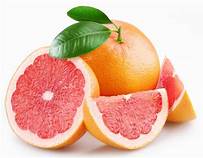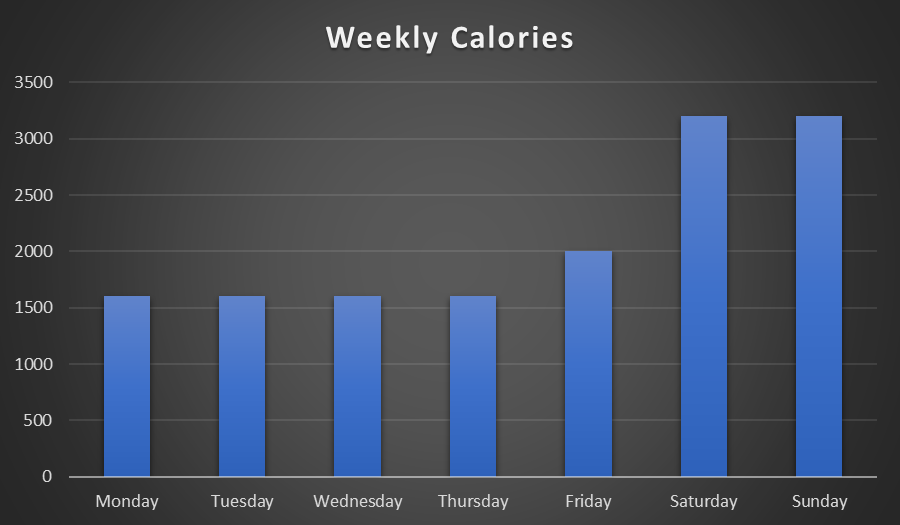During periods of intense training or immediately following endurance race events, many athletes find that they are susceptible to minor respiratory illness, such as colds and sore throats. While moderate training seems to boost your immune system, prolonged periods of intense training appears to depress immune cell functions. There may be a certain window of decreased protection after these intense sessions, this means that you can be at more risk of viruses and bacteria which may develop an infection. It is thought that the increased levels of stress hormones, such as adrenaline and cortisol can inhibit the immune system (hindering its ability to protect you). But other simple stresses such lack of sleep, poor nutrition or perceived stress can depress immunity.
0 Comments
Nutrition and Disease
A disorder of structure or function in a human, one that produces specific symptoms or that affects a specific location and is not simply a direct result of physical injury. The Relationship between nutrition and disease
Overweight and obesity are defined as abnormal or excessive fat accumulation that presents a risk to health. A crude population measure of obesity is the BMI (Body Mass Index). A person with a BMI over 25 is considered overweight while a BMI over 30 is considered obese. These two issues are major risk factors for a number of chronic diseases including diabetes, heart disease and cancer. WHO Some causes of obesity:
Problems associated with obesity: Physical problems
Psychosocial Problems
Strategies to combat obesity:
The facts about childhood obesity:
Heart Disease Heart and blood vessel disease is an umbrella term for any type of disorder that affects the heart like coronary artery disease, heart rhythm problems and heart defects. The most common forms of heart disease involve narrowed or blocked blood vessels that can lead to heart attack, chest pain or stroke. Causes of Cardiovascular disease
Risk Factors associated with Heart Disease
Heart Disease Prevention
Cancer Cancer is the name given to a collection of related diseases. In all types of cancer, some of the body’s cells begin to divide without stopping and spread into surrounding tissues. Cancer can almost start anywhere in the human body. Many forms of cancer form solid tumours. Malignant tumours mean they can spread or invade nearby tissues. Benign tumours do not spread. As with other diseases nutrition is linked to the prevention of cancer and is also thought to relieve symptoms in cancer patients. It is advised to maintain a healthy diet during cancer treatment but this may be difficult depending on type of cancer. What affects nutrient absorption during cancer treatment?
Diabetes mellitus is a condition caused by a lack or insufficiency of the hormone insulin. Insulin works by allowing blood sugar to be used as an energy source. If insulin is deficient, blood sugar will build up in the bloodstream. Therefore, diabetes is characterised by high blood sugar levels. Early symptoms of diabetes:
Type 2 Diabetes Type 2 diabetes occurs when the body makes insulin but their cells don’t use it as well as they should, this is called insulin resistance. Symptoms and prevention: Symptoms are the same as someone with type 1 diabetes. Prevention/Treatment
So why are there so many injuries in the GAA community to do with hamstrings? Is it to do with the pitches, the pivoting/turning, the high pace, bad running mechanics, the lack of mobility or the lack of strength? There are a lot of variables and although arguments can be made for each part, I will be focusing on lack of strength. In 2015, hamstring injury reports in the GAA were up on 29.1% and repeated hamstring injuries were reported at 33%. The hamstring seems to be something that comes back again. Remember these were the reported rates; I assume the actual rate is higher of both initial injuries and repeated injuries. Why are people repeating injuries, is it going back to the pitch too soon or poor rehab procedures or not continuing rehab while back on the pitch. It is probably a combination and lack of knowledge on the anatomy of the hamstring. The hamstring injuries are prominent because of the various movements/variations in the sport; it isn’t down to one thing.
Uneducated people are pointing the finger at the strength programs claiming that they are working their hamstring too much in the gym blah blah blah and under all of the pressure it has acquired this injury. Well, there is a good understanding of how the injury occurs for the most part, especially in field sports. It mainly occurs during a sprint, when the lower leg is moving toward the ground and striking it with force. As we apply so much weight and force onto every step, our hamstring overloads in a bid to decelerate (eccentric contraction) and the muscle fibres strain/tear. There are a lot of factors involved in an injury like this, a lack of strength, tight/immobile hips, lack of flexibility in hamstring and even being generally unfit can be enough for these fibres to strain. There are more internal problems, than external. So stop blaming pitches, rain, hard ground or any of that for your own imbalances. A lot of the strength exercises that GAA players perform are totally quad dominant from front squat, back squat (unless you can hit low bar), hex bar deadlift, lunges to split squats. There is a lot of research showing that healthy and strong hamstrings are beneficial for injury prevention. One particular study in 2007 by the Sports Injury Research centre Las Vegas, studied the effect of hamstring-emphasized resistance training on hamstring:quadriceps strength ratios. It basically showed us that athletes with powerful quadriceps a, but underdeveloped hamstrings or weaker hamstrings tend to have a greater risk of hamstring injury, and even more interesting, this off balance meant an athlete would have a greater risk of an injured ACL (which is another dominant injury in GAA as mentioned in the first part of this piece). Other leg exercises along with hamstring ones have profound effects on our tendons and ligaments. After 10 weeks (for general population), you can expect a 20% increase in the strength and thickness of your ligaments and tendons, which goes a very long way when minimising injuries. Let’s look at the hamstring anatomy and actively break down how we can and should train it in the gym. The hamstring crosses two joints, the knees and the hip. This means that they have two main functions, knee flexion and hip extension. Knee flexion is when you move your ankle/calf toward your hamstring (like you would in a leg curl) and hip extension is anything that occurs when you move your thigh backward (like a Romanian deadlift). It is important to train both methods to increase the strength of your hamstring in a lengthened range and a shortened range. By combining these hip extensions and knee flexion, you will be strengthening all 3 muscles in the hamstring, along with some running of course. But it is important to cater to all of these ranges. The Bicep Femoris has a short head and a long head, which must be trained at both ends so there aren’t any imbalances, alongside training the other two muscles, the semitendinosus and the semimembranosus. The fact the hamstrings pull on the knee and hips, they can cause pain in lower back, knees and other areas of the body, so get on top of it. Examples of exercises you can use to strengthen both ranges: Knee flexion Hip extension Short to mid-range Long to mid-range 1) Leg curls 1) Romanian deadlift 2) Nordic curls 2) Good- mornings 3) Band curls 3) Kettlebell swings Look after your hamstrings guys and remember to train your hamstrings at different lengths :) A fad diet is a weight loss plan or aid that promises dramatic results. These diets typically don’t result in long term weight loss and they are usually not very healthy. In fact, some of these diets can actually be dangerous to your health. How to spot a fad diet?
Unfortunately, social media has increased the coverage of these diets or diet supplements. ‘Influencers’ promote them and market photoshopped images to make a little extra cash. It’s a sure way for young, impressionable teenagers to catch on. There have been many crazy fad diets in the past but supplements and teas seem to have taken over the present. Some examples:
Why these diets don’t work
The best type of ‘Diet’
Are you a Monday to Fridayer? Are you working super hard during the week just to undo all that come Friday evening? I know a lot of people won’t like hearing it but it is the harsh reality. From Friday evening at 6pm until Sunday at 12am is 32% of your week. And unfortunately, when you put in 70% effort you don’t necessarily get 70% of the results. Calorie deficit If weight loss is a goal, you need to be in a calorie deficit. This means you need to be burning more calories than you are consuming. This usually works on an overall weekly figure (see previous blog post on how to calculate calories). If your overall weekly calories are not in a deficit, it doesn’t matter how hard you’ve worked Monday to Friday, you will not achieve your goals. Example: Mary is 70kg. She’d like to get down to 65kg. Mary has a pretty sedentary job but she trains hard 3 days a week. Her average daily calories are approximately 1700 for her to be in a calorie deficit. (2100 maintenance). Mary works hard Monday to Friday and keeps her calories lower during the week so she can allow for a few treats at the weekend. But those few treats turn into a cinema date Friday, Drinks Saturday and a big takeaway Sunday to cure the hangover. So Mary’s overall weekly intake ends up at 14,800 which is her maintenance calories so the scales is not going to budge. Sound familiar?? If you continue in this cycle you will never achieve your goals. Nobody is saying you have to give up everything you enjoy, but you are going to have to sacrifice some things to achieve your goals. Results come to those who are consistent, not perfect
If you want to create your own program, that is great, nobody understands your body and lifestyle better than you do. But before you dive in, there are some things to keep in mind when programming. It is important to consider these variables, time/commitments, stress, preferred method, your goals and accessibility. These are mostly things you should consider before even beginning a training plan.
Time and commitments are important and more often than not, commitments dictate the weekly plan in the gym. If I only have 3 evenings free, they are the times I’m training. A lot of people have out of work commitments with local clubs, community work, children who have hobbies and families to look after. From day one, you need to pick your days and make training a priority before you even step foot in a gym. Don’t have time? Make time. Then, the next step depends on how long you can give to the gym, 30/45/60 minutes? If it is less, stick to the compound lifts that give you more bang for your book. If you have time, add in some accessories and other lifts. Accessibility is important now. What gyms are close to home/work. Know the opening times, the equipment and the environment. Does it have everything you need and does it feel like somewhere you would love to train? Again, this is something we don’t think about but should consider as your happiness and environment are important when you’re training. Stress is important as our Central Nervous System (CNS) doesn’t know the difference between physical stress and financial stress for example. Stress is simply stress. This is how you gauge your volume and intensity. If you have a highly stressful job (surgeon) and a stressful house (6 children), don’t go too hard on yourself, less may be more for you. If you are someone who may be in the same position, but not stressed at all, you may be able to increase intensity as your CNS can cope. Your preferred method of training is very important, as you want to do something you will sustain forever, and adherence is much easier when you enjoy what you’re doing. Pick a method you will stick at as fitness is a journey everyone should begin, but nobody should finish. Now that all of that is under control, the important aspect of training, what are your goals? Specific goals need specific plans. Make sure you are keeping the goal in mind when you are selecting exercises and creating your program. You want a big bum? Better have some glute bridges/hip thrusters/squat variations and singing movements. Want a big chest? Better challenge it through flat bench, incline and chest flies etc. If you’re training for a specific sport, make sure your strength sessions are adding to that and not taking away from your performance. This is a lot to take into account, if you do not want the hassle of organising these things, I would advise finding a gym environment you love, talk to the trainers there and let them take care of the rest, the methods, times that suit you, programs tailored to your life and watch your life dramatically improve. Did you know?
We have 11 different systems in our body, and they all work with each other. The endocrine system is the one that contains our hormones and food passes through the digestive system. These systems can work in sync or there can be many factors that make them work against one another. What are hormones? Hormones are chemical messengers that are secreted directly into the blood, which carries them to organs and tissues of the body to exert their functions. They are secreted by the endocrine glands in the body. Some of the major glands include: Thyroid, adrenal glands, pancreas, ovaries and pituitary gland. Some hormones we may have heard of include Cortisol, Insulin, Glucagon, Adrenaline and Growth hormone. I want to explain a little bit about how these hormones can be affected by the foods we eat or our environment etc. Cortisol Cortisol is a steroid hormone secreted by the adrenal glands. Cortisol is the stress hormone and is responsible for controlling blood sugar levels, acts as an anti-inflammatory, controls salt and water balance and influences blood pressure. Cortisol levels are usually high in the morning and decrease as the day goes on. Our body wants to regulate the amount of cortisol released, too much or too little is not optimal. But some factors may affect Cortisol secretion, like times of high stress or malnutrition or obesity etc. This can lead to a negative impact on the body. Too much cortisol can lead to:
2.Consistently high blood glucose levels coupled with insulin supression lead to cells starved of glucose. Cells send hunger signals to the brain. 3.Cortisol also influences cravings for high calorie foods
Insulin is a hormone made by the pancreas that allows your body to use carbohydrates as energy and allows us to store carbohydrates for future use. If you have extra carbohydrates (in the form of sugar) than your body needs, insulin helps store the sugar in your liver and release it when your blood sugar is low, such as in between meals or during physical activity. When the liver has taken it’s capacity of glycogen, insulin signals fat cells to take up glucose to be stored as fat in the body. Over time because of over consumption of carbohydrates our cells can become resistant to the effects of insulin. Type 2 diabetes can then occur. This is very common in the overweight/obese population. |
AuthorCraig Connolly Archives
March 2020
Categories |



 RSS Feed
RSS Feed